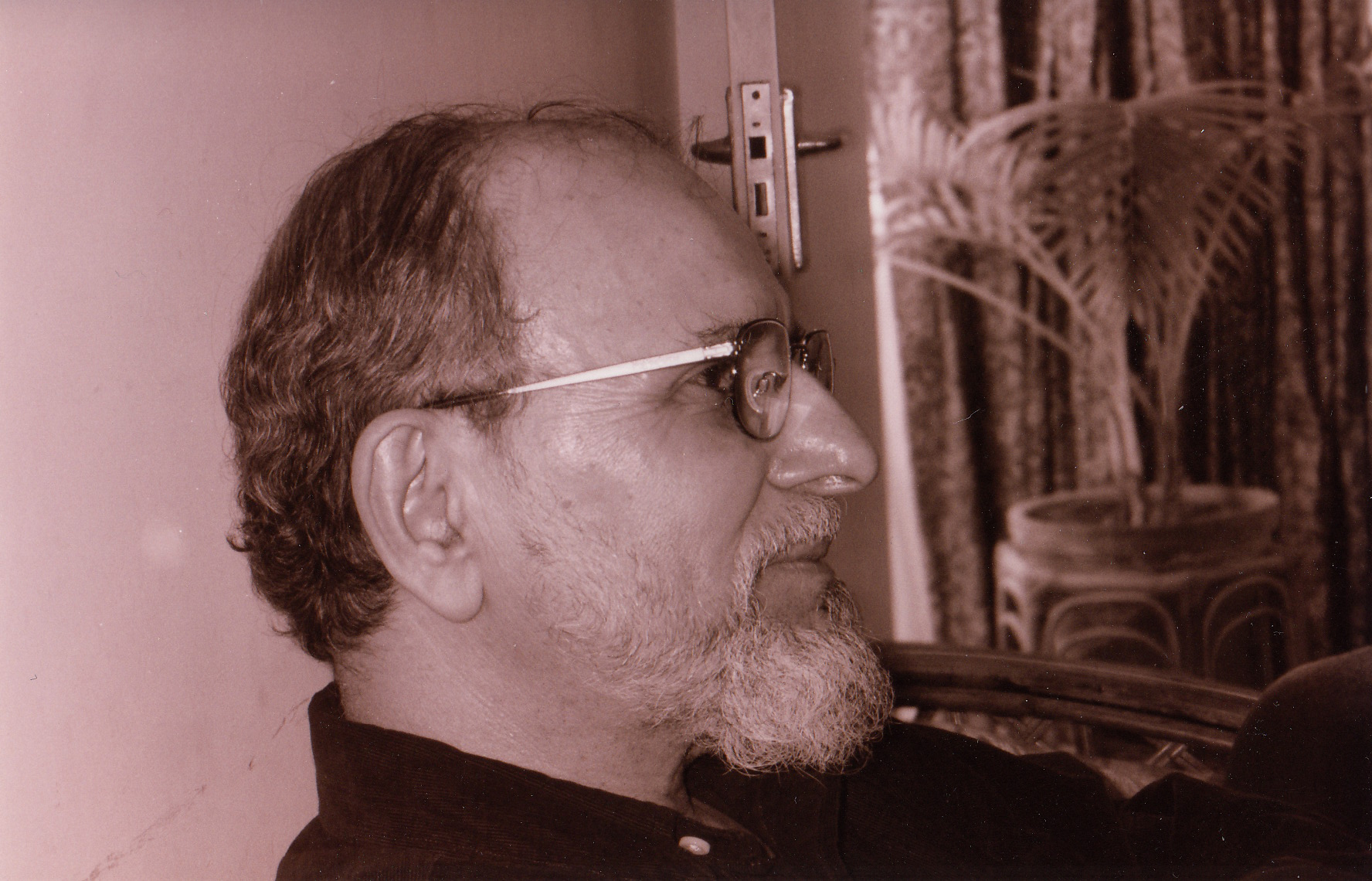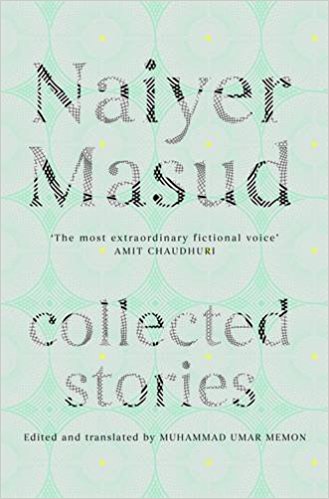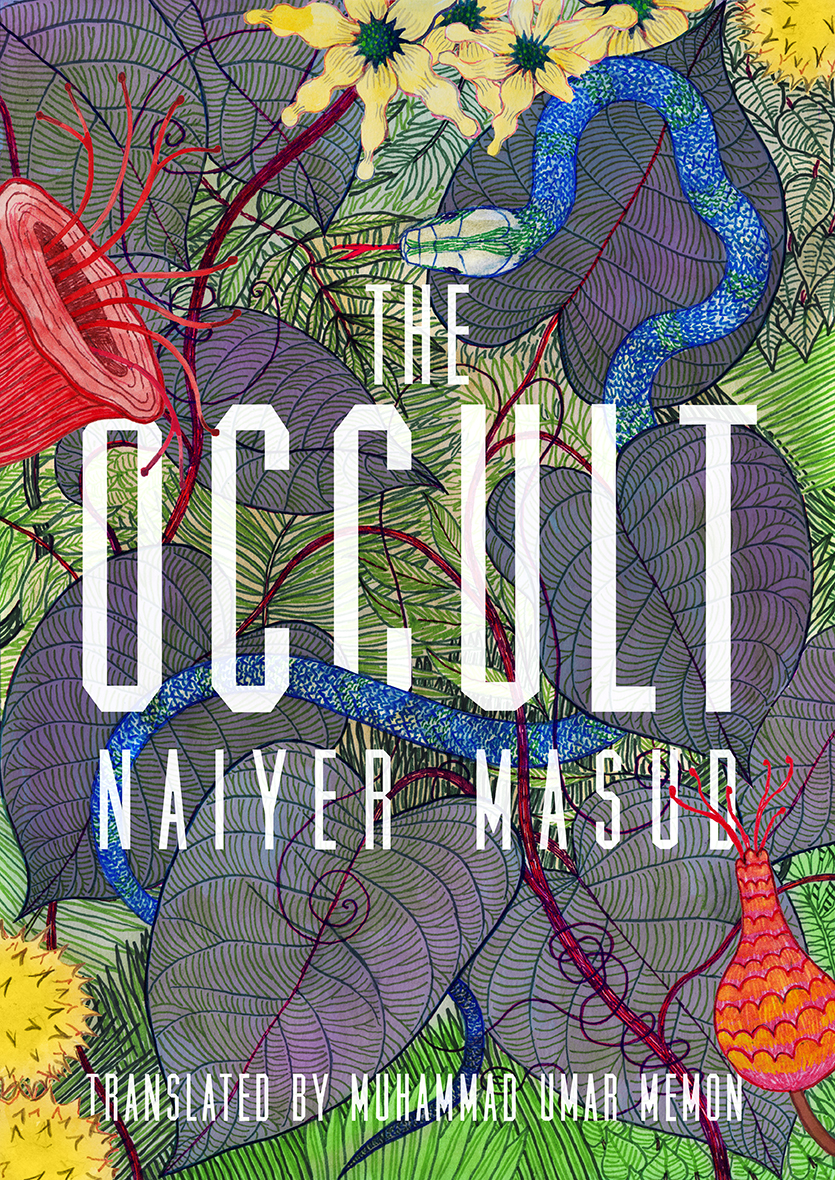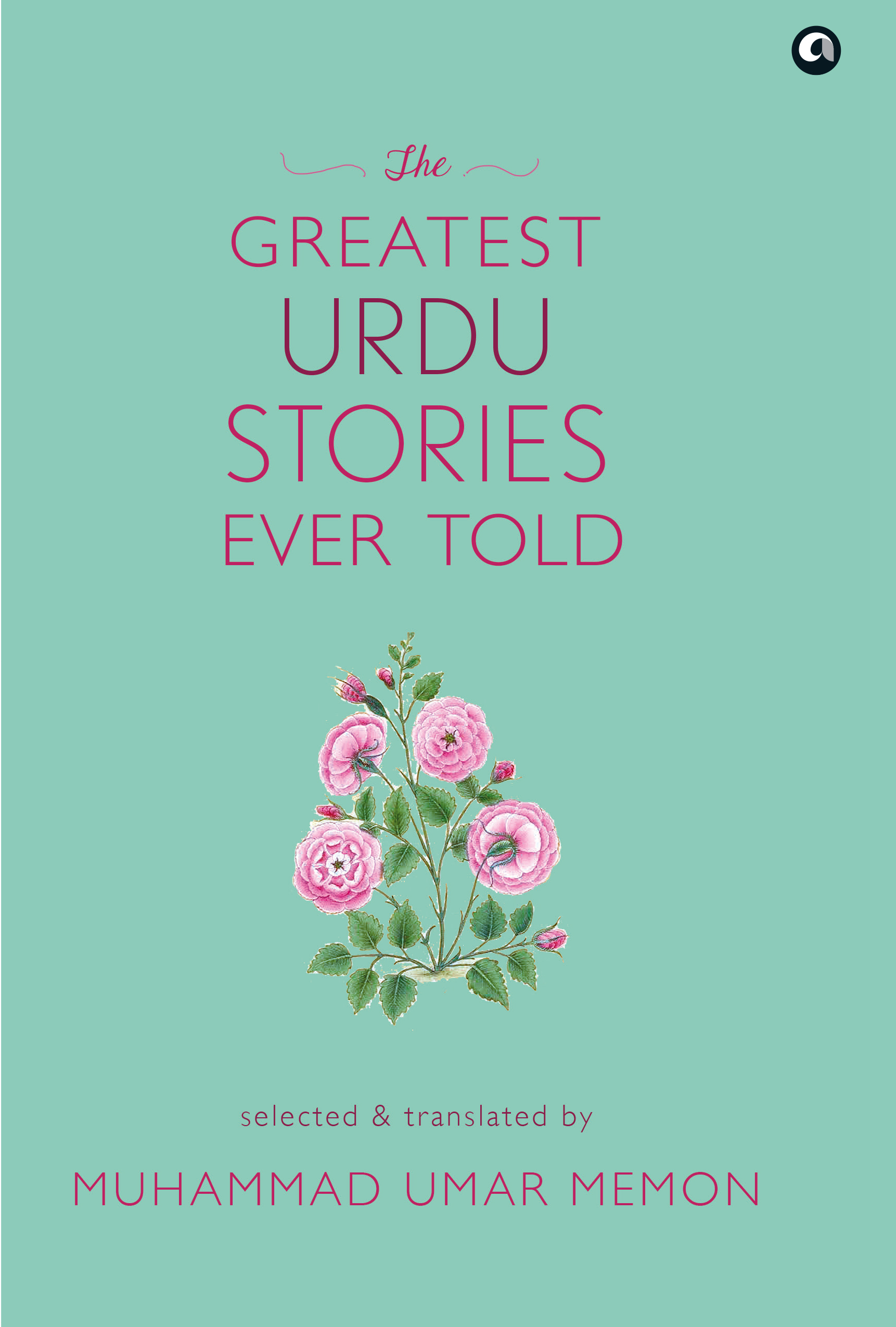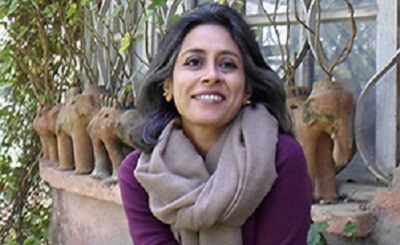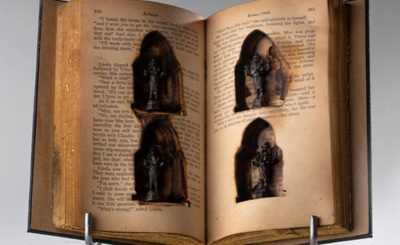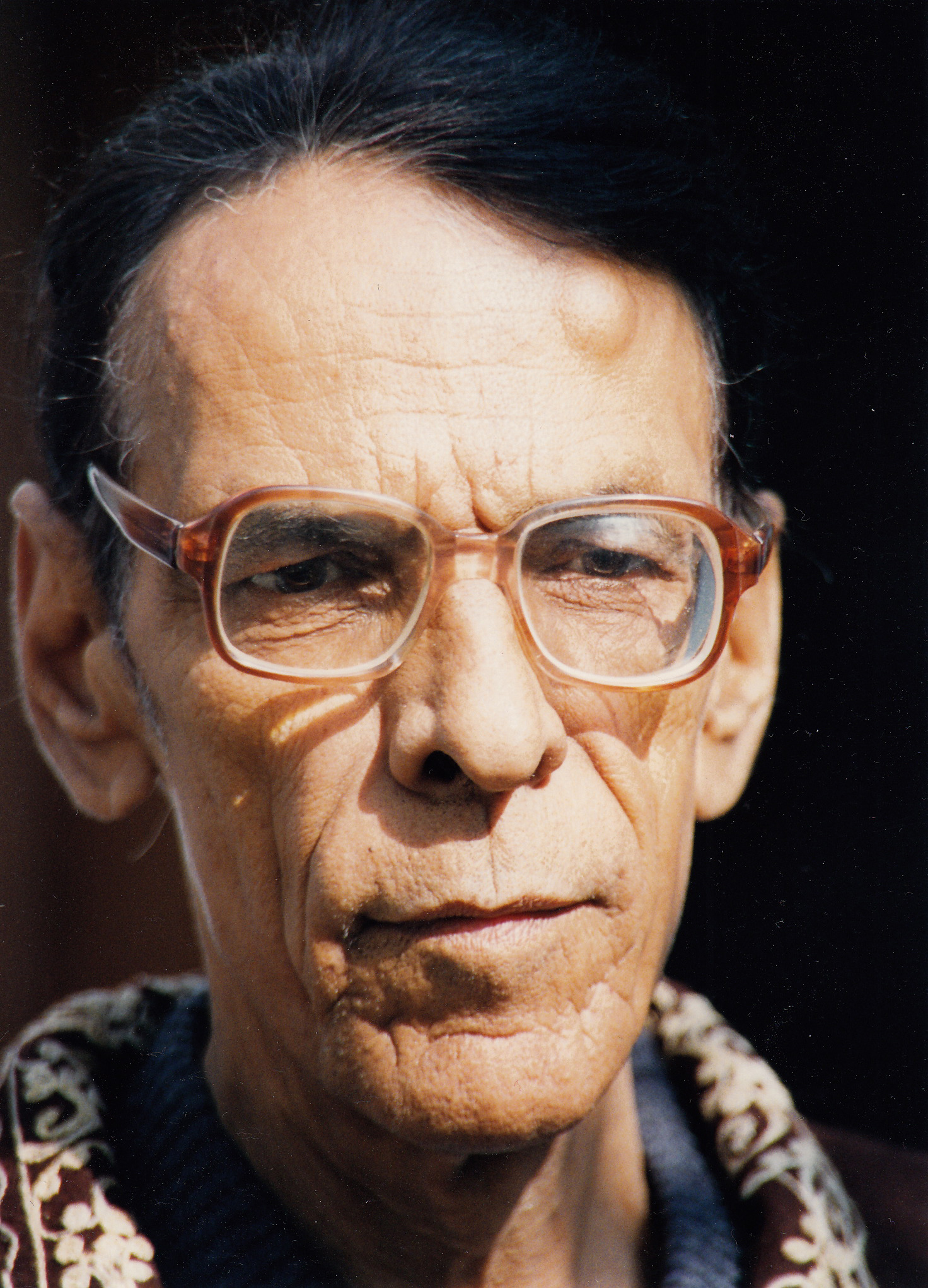
Naiyer Masud. Photos courtesy of Muhammad Umar Memon
Muhammad Umar Memon, who has translated Naiyer Masud's stories, on the labyrinth of his fictional universe
Naiyer Masud (1936-2017), who passed away in Lucknow on July 24 at the age of 81 after protracted illness, was one of the greatest Urdu short story writers who has been extensively translated into several languages, including English, Finnish, French and Spanish.
Masud was born on November 16, 1936 in Lucknow. His parents came from families of physicians (hakims). His father, Syed Masud Hasan Rizvi Adeeb, was a professor of Persian at Lucknow University and a famed scholar of dastaan. He was the elder brother of noted Urdu satirist Azhar Masud. In 1965, Masud joined Lucknow University as a professor of Persian where he remained till his retirement in 1996.
Masud’s four books of short stories — Seemiya (The Occult), Itr-e-Kafoor (Essence of Camphor), Taus Chaman ki Maina (The Myna of Peacock Garden) and Ganjifa (Card) — cemented his reputation as the master of the unsaid who created a maze, a labyrinth in his stories that held the reader captive to their narrative wizardry, their illusory spell.
Masud also translated a few short stories of Kafka as well as some Persian stories into Urdu. He also wrote critical and biographical accounts of Mir Babar Ali Anees (1803-1874), Yagana Changezi (1884-1956) and Mirza Ghalib (1797-1869). He was awarded the Padma Shri for Literature and Education in 1970. He was also honoured with the Sahitya Akademi Award for Urdu in 2001 and the Saraswati Samman in 2007.
In this interview, critic and short story writer Muhammad Umar Memon, professor emeritus of Urdu literature and Islamic studies at the University of Wisconsin, Madison, who has translated Masud’s stories into English — (The Occult, Penguin Books, 2013) and Naiyer Masud: Collected Stories (Penguin Random House, 2015) — talks about Masud’s enchanting fictional landscape. “His fiction invites you to enjoy the labyrinth for what it is and, if possible, become it — something like the complete fusion or identity of the observing subject and the observed object,” says Memon. Excerpts from an interview:
SHIREEN QUADRI: In Naiyer Masud: Collected Stories (Penguin Random House, 2015), you mention about your first encounter with Naiyer Masud’s fiction in the late 1980s and how you were stunned by Seemiya, his first collection. You talk about his stories as “fragments of consciousness suggestive in their fractured imagery of some presence somewhere in the beyond”. Could you share your initial impression of this encounter and how it has evolved over the years?
MUHAMMAD UMAR MEMON: That first impression, which I perhaps share with most of his readers, persists.Take, for example, some images that occur with rare economy of description in most of the stories of Seemiya, but only in fragments, revealing a little of themselves at each occurrence, such as the ubiquitous lone fragment of the mysterious cloud, the curios mentioned in passing in the opening story, “Obscure Domains of Fear and Desire”, and then repeated with additional details in practically all the others, with their relatively detailed treatment in the third story, “Snake Catcher”; or the young woman fleeing from the sexual advances of the narrator which is touched upon lightly in the first story, then again in the third, but occupying a substantial part of the fourth and eponymous story of the collection where her flight ends in drowning. More tellingly, however, it is the opening paragraph of “Obscure Domains of Fear and Desire” and its verbatim retrieval as the closing part of the last story, “Resting Place.”All this creates an overwhelming impression of some sort of inherent interconnectedness and of what lies in between as somehow being an organic part of a continuum. Yet all five stories of the collection preserve their autonomy. While they do not yield any sense of spatial or chronological continuity, or closure, they do leave the reader with two dominant impressions: that (1) the author is dealing with a continuum, and (2) it can be viewed only in fragments.
What stunned me was the deliberate attempt of the author to suppress the links that would — or, might — have restored the fragments to their logical place in the continuum. The resulting jolting effect makes it difficult to grasp the ultimate meaning of the work; perhaps the reason why one is hard pressed to articulate for oneself or explain to others with any degree of confidence and precision what a given story is about — what it means.
Nor can one dismiss these stories as so much mumbo jumbo and move on. They just don’t let you move on. They haunt you. You are hooked. Nothing like this arresting quality is seen anywhere in Urdu fiction, where you are completely taken, without knowing, ironically, what has taken you.
SHIREEN QUADRI: Masud’s four collections of stories — Seemiya, Itr-e-Kafoor, Taus Chaman Ki Mayna and Ganjifa — establish his reputation as possibly the greatest Urdu short story writer. He has been variously described as a “realist of the strange” (by Amit Chaudhuri) and as a “poet’s storyteller” (by Agha Shahid Ali). What place do you think he occupies in the legions of Urdu writers whose works have been embraced and appreciated by the wider world?
MUHAMMAD UMAR MEMON: I’m not sure about the perimeters of this “wider world”. Do you mean the territories of South Asia or the whole world? Frankly, I don’t think too many Urdu fiction writers have received much recognition outside the South Asian subcontinent. They became known mostly on university campuses with departments of South Asian Studies after some of their work became available in translation, but not among mainstream Western readers. I think Saadat Hasan Manto and Naiyer Masud are comparatively better known outside South Asia. Essence of Camphor, one of the two books of Masud’s stories I published in the US, received many good comments in Kirkus Reviews, The Boston Globe, The Los Angeles Times and numerous other US newspapers and magazines, and was later translated into Finnish, French and Spanish. But I doubt it sold more than a couple of hundred copies in the US. As for within South Asia, Masud is generally considered the finest Urdu fiction writer today, without progenitor or progeny.
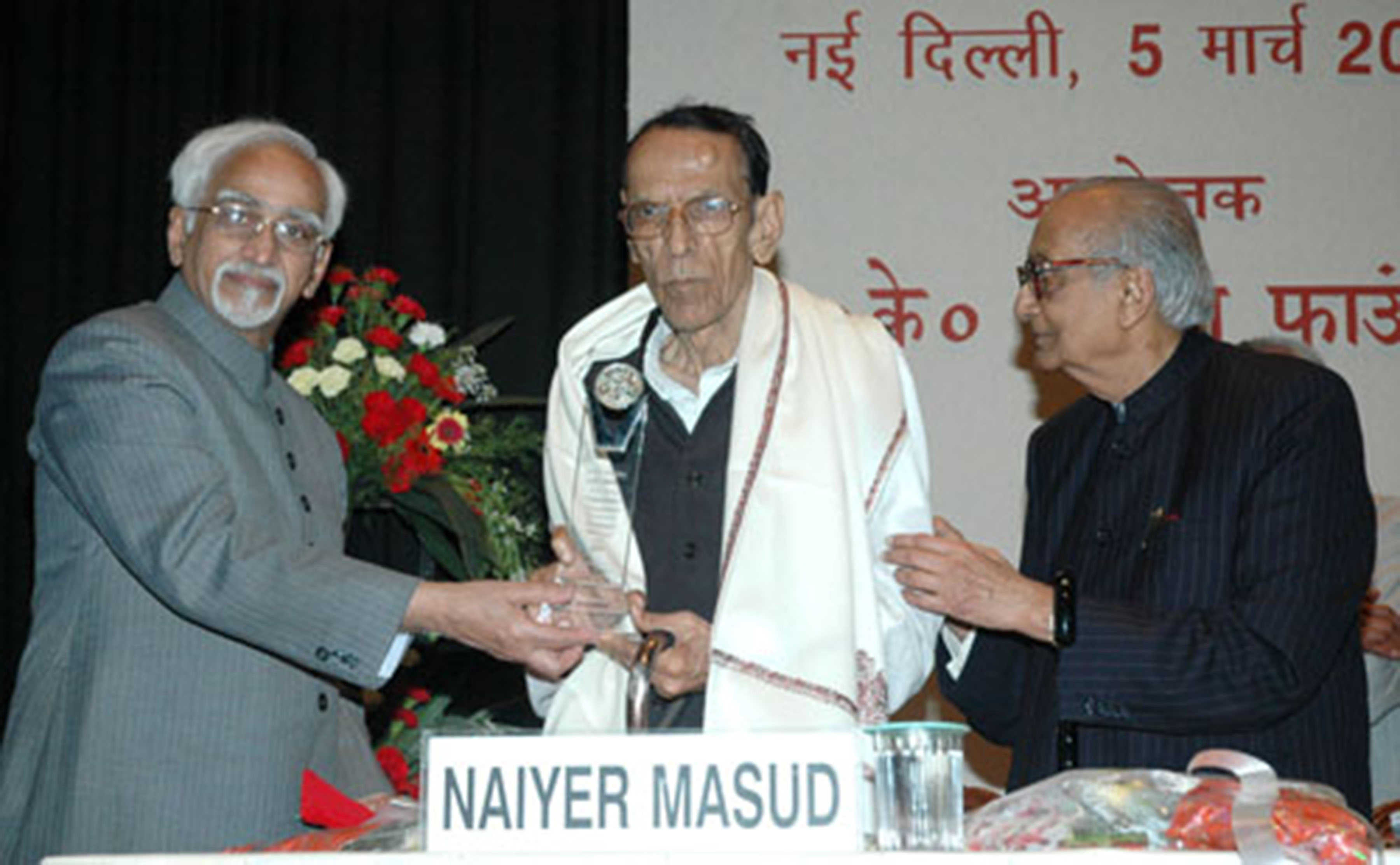
Naiyer Masud receiving Saraswati Samman from the then Vice-President Hamid Ansari on March 5, 2008.
SHIREEN QUADRI: Seemiya, a collection of five interlinked stories, which you translated into English (The Occult, Penguin Books, 2013), is more like a novel in stories. They have no discernible plots, their terrains are unidentifiable, the characters that inhabit them have no names. While these stories are autonomous, they coalesce in unexpected ways, with certain images recurring in more than one story. Tell us about your understanding and appreciation of his first collection which, in many ways, cemented Masud’s reputation as a master of the form?
MUHAMMAD UMAR MEMON: I have already given some idea of both my appreciation and the tenaciously illusive nature of The Occult in the answer to one of your previous questions. However, let me add a little more: The jolts that throw the reader in a vortex of incomprehensibility are the result of paring down to as much as one-tenth the draft of a work from its original length. Why does he do that? Two examples, in his own words:
“(1) Once a thing is brought into existence, it continues to live in some form or fashion even when it is removed from the scene. For example, you are sitting on this sofa; you then decide to get up and leave. You are not on it anymore, and yet your presence will be felt, to some extent at least, however obscurely or intangibly. But that other sofa, just brought in from the store, on which no one has yet sat, cannot be the same as the one you had sat on. It is necessarily different. One cannot describe this difference in words, but one can feel it, subliminally.
(2) There was this woman who was an accomplished cook. A certain dish that required only four ounces of ghee she’d cook with two-and-a-half pounds of ghee, removing the extra when it was done. But the dish tasted very special and retained the flavour, the essence of the finest dish from the table of the nobility.”
What he tries to do, then, is to retain the aura of the excised portions in those that he does keep. Never mind the suppression of details pertaining to the event being described, something reminiscent of their erstwhile existence will be felt in the retained parts. His job is to craft a language which will convey this veritable existence in its equally veritable absence. He elaborates it further: “Take, for example, the phrase ‘nisvÄnÄ« badan kÄ« khushbÅ«’ [scent of a woman’s body] or ‘qadmoñ kÄ« Ähat’ [the sound of footfalls suggestive of a presence]. They occur once or twice in my work at most, yet nonetheless seem to pervade it.”
Page
Donate Now
More from The Byword
Comments
*Comments will be moderated




